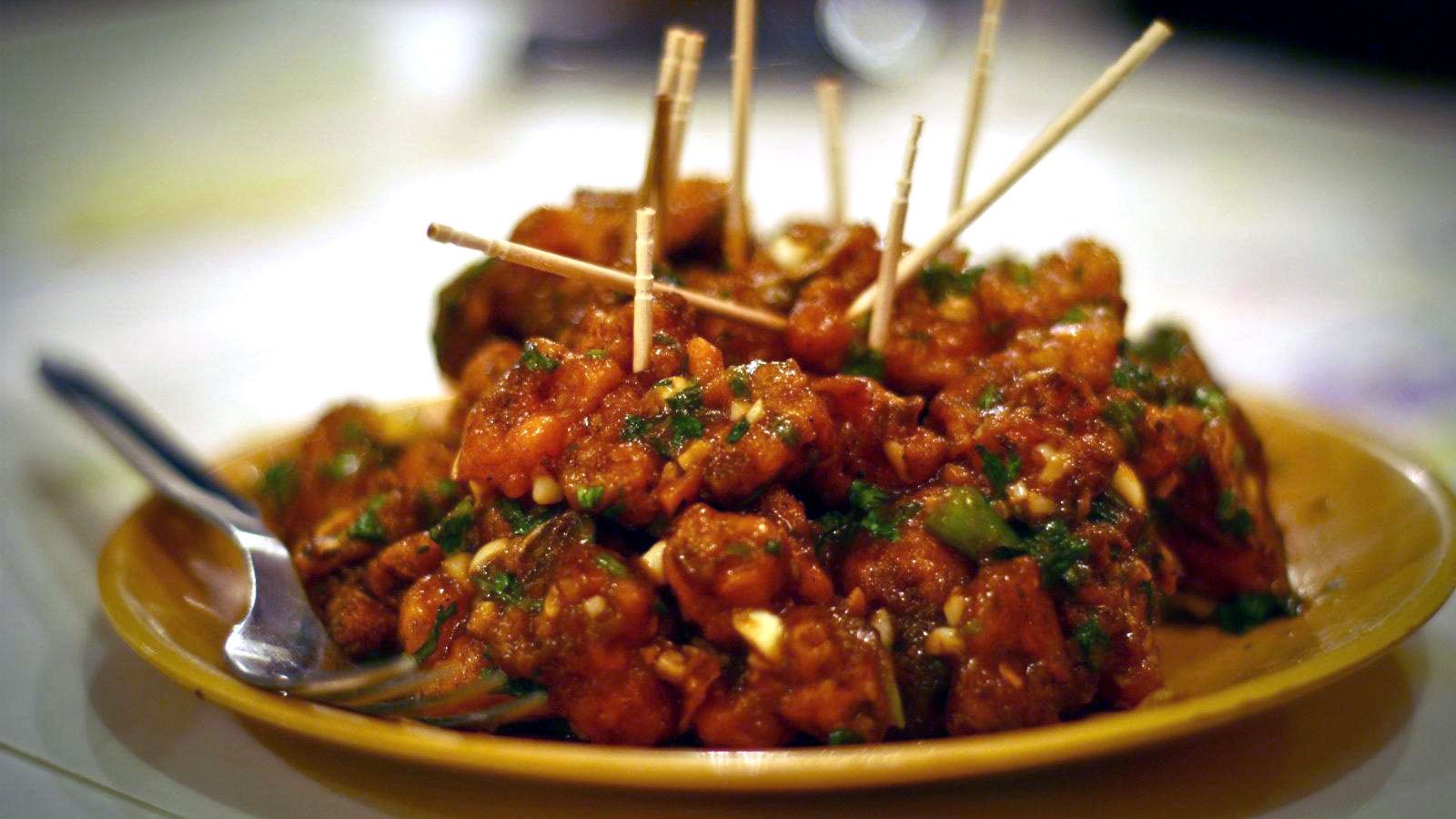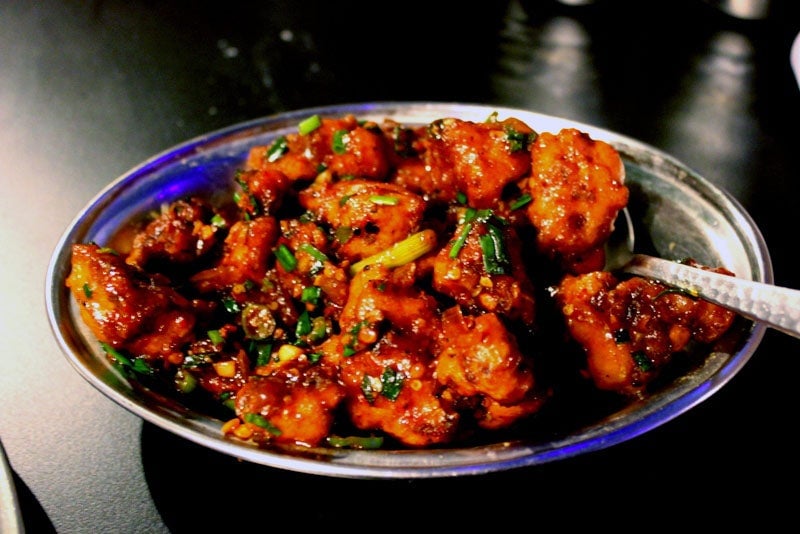How Chinese cuisine became India’s comfort food
On any given day in an Indian metropolis, foodies are spoiled for choice. There’s now Japanese-Peruvian cuisine, French patisserie, Mexican tacos, and more.


On any given day in an Indian metropolis, foodies are spoiled for choice. There’s now Japanese-Peruvian cuisine, French patisserie, Mexican tacos, and more.
But all these choices haven’t taken away the crowds inside the scores of Chinese restaurants that dot every city, with names like China Bowl, China Pearl, Chung Wah, Wangs, or Zhangs. From fancy establishments to neighbourhood joints, countless restaurants serve what is now recognised as quintessentially Indian Chinese food: spicy gravies, saucy noodles, and the legendary chicken or vegetable manchurian—always batter-fried and doused in chilli garlic sauce—all of which bear very little resemblance to the food actually eaten in China.
“It’s like a comfort food for us,” Priya Bala, the author of Secret Sauce: Inspiring Stories of Great Indian Restaurants, told Quartz. “We don’t even think it’s Chinese; it’s very familiar and comforting.”
So much so that even restaurants serving Indian food will usually include a Chinese section on the menu. This will feature all the usual favourites—fried rice, chilli chicken, sweet corn soup—and many will think nothing of ordering a dish or two.
But how did Chinese food become so beloved in India? Like many great stories of food culture around the world, it begins with immigrants and the interaction between different communities, which over the centuries produced a hybrid cuisine that took on a life of its own in India.
Calcutta calling
The story of Indian Chinese food begins in 18th century Calcutta (now Kolkata), which the British East India Company established as the capital of colonial India. Located in the midst of a thriving trade route through which items like tea and silk were transported from China to Britain, Calcutta soon began to draw communities of skilled and unskilled Chinese workers.
The very first Chinese migrant is believed to have been a tea trader named Yang Dazhao, popularly known as Yang Atchew, who arrived in 1778 and set up a sugar mill on land given to him by the British, bringing people from the mainland to work for him.
By 1901, the census recorded 1,640 Chinese people living in the city, researchers Zhang Xing and Tansen Sen write in a chapter on the Chinese in south Asia in the Routledge Handbook of the Chinese Diaspora. By the end of the Second World War, they say, the number had surged to at least 26,250.
These Chinese immigrants came from different regions but could broadly be categorised as Cantonese carpenters, Hakka shoemakers and tannery workers, Hubeinese dentists, and Shandong silk traders, Zing and Sen write. These immigrants would lay the roots for India’s obsession with Chinese cuisine.
“(For) every community, wherever they go, food is an important way to create a sense of belonging and familiarity,” said Jayani Jeanne Bonnerjee, associate professor at the OP Jindal Global University, Haryana, who has studied the history of Calcutta’s Chinese community. In the city’s centrally located Chinatown, immigrants cooked their own food and peddlers began selling them on the streets to fellow Chinese workers.
Then, in 1924, Calcutta’s first Chinese restaurant, Nanking, opened up, serving Cantonese food that reportedly went on to draw the likes of yesteryear Bollywood stars Raj Kapoor and Dilip Kumar, besides a host of other Indians and Europeans living in the city. Several other Chinese-owned restaurants would open up over the following years, not just in Calcutta but in Bombay, too, where there was another sizable community of immigrants. But it was in Calcutta where the cuisine would begin to evolve, catering more to Indian tastes.
From Chinese to Indian Chinese
There isn’t a lot of academic work on how exactly Chinese food began adapting itself to Indian tastes, but various accounts place its starting point in Calcutta’s second Chinatown, located in Tangra, where the Hakka Chinese set up leather tanneries. The restaurants they went on to establish in the area began incorporating techniques to make food more appealing for Indian customers, notably using a lot more of chilli.
How the idea of Indianised Chinese food spread from Tangra to the rest of the country is also a bit unclear. What we do know is that in about 1974, India’s first Sichuan restaurant opened up at the Taj Mahal hotel in Bombay, introducing locals to a type of Chinese food they had never experienced before: fiery hot.
“So people started going to lesser establishments and demanding that kind of Chinese food,” journalist and food writer Vir Sanghvi told Quartz. To cater to this growing demand, he explained, the owners of Chinese restaurants set out to create a cuisine that incorporated these tastes.
“They didn’t have ingredients like Sichuan peppers and all the things that the Taj had access to, so they improvised. Basically the principle was that you deep-fried meat and you put it in a gravy that had been thickened with cornstarch, and for spices you used Indian spices as much as possible,” Sanghvi said.
The evolution of Chinese food in India was accelerated by several such innovations, among them the invention of chicken manchurian. A man named Nelson Wang, the son of Chinese immigrants in Kolkata, is most often credited with its creation. The story goes that Wang ended up in Bombay in the 1970s, working as an assistant cook at another Taj restaurant, Frederick’s. One day, he happened to experiment with mixing garlic, ginger, and green chillies—quintessentially Indian ingredients—with soy sauce and cornstarch to thicken the gravy. The result was the now ubiquitous chicken manchurian.

Wang would go on to run a handful of Chinese restaurants in Bombay, but he’s best known for China Garden, a legendary space that took Indian Chinese food from the streets to the glamourous world of fine-dining, complete with monogrammed napkins and elegant and sophisticated service.
“It was just simply the place to be,” Bala said. With its attached members-only Piano Bar, China Garden would go on to attract the who’s who of Bombay high society, including Bollywood stars and socialites. The Hollywood star Goldie Hawn also stopped by for a visit, besides Pakistani cricketer (and now prime minister) Imran Khan.
Outside China Garden, too, Indianised Chinese food was becoming increasingly popular, which food writers say was because it appealed to the country’s gravy-loving palate and was packed with delicious flavours. The secret to its success was the use of a “holy trinity” of ingredients—tomatoes, soy sauce, and chilli—that offered Indian customers a taste of something they couldn’t often find in local food.
“Indian (food) is one of the few cuisines that has very few umami flavours…That was the one taste that Indian cuisine was lacking, and the creation of Chinese cuisine satisfied that,” Sanghvi said.
But how Chinese food became embedded into India’s culinary identity also has a lot to do with the country’s eating out culture in an era when a restaurant meal was still reserved for special occasions.
Comfort food
Today, around 60% of Indian millennials eat out over three times a month, and spend about 10% of their income on buying food from restaurants, caterers, and canteens. In comparison, Gen-X Indians, aged between 35 and 50, spend only about 3%. The popularity of dining out has meant that metropolises are packed with restaurants and cafes, and food-delivery apps such as Swiggy are doing booming business catering to those who don’t want to cook at home.
All this represents a huge change from the way things were before.
“In the 1980s and 1990s, going out to eat meant going to a Chinese restaurant,” Bonnerjee said. “Now you have everything, but I think the first cuisine that sort of opened up the taste buds to the others is the Chinese.”
With all its rice and gravy-based dishes, Chinese food was the ideal combination of foreign and familiar for Indians, according to Bala. So for many, eating Chinese food taps into the nostalgia of growing up in this country at a time when dining out was very different from the way it is today.
These days, though, the Chinese restaurants across the country are mostly Indian-owned and have Indian cooks. As for the Chinese community, things were never the same after the 1962 war between India and China. During this conflict, thousands of Chinese in India were suspected of being spies and sent to a detention camp in Rajasthan, where they were reportedly kept under brutal conditions for years. Many were even deported.
After that, the Chinese community began to dwindle significantly (pdf) as its members emigrated to places like Canada. Now, only a few thousand remain in Kolkata. As for India’s historic Chinese-owned restaurants, many are either gone or simply not what they used to be.
At the same time, Asian fusion food is exploding in every metropolis, and urban Indians are savouring much more exotic dishes like ramen, khow suey, and char siu bao. But to this day, there are few who can turn down a plate of crispy honey chilli potatoes or chicken manchurian, because nothing quite hits the spot like Indian Chinese food.
Feature image by Harsha KR on Wikimedia Commons, licenced under CC BY-SA 2.0. Inline image by Sanya1492 on Wikimedia Commons, licenced under CC BY-SA 4.0.